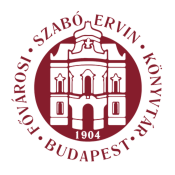Ferkai András: Housing Estates - Our Budapest (Budapest, 2005)
Housing Estates after 1945
ing into the single motif of an enormous gate. The architects set up two teams to finalise the blueprints—the Creation team took 119 days of the officially permitted 350 days, while the Peace team needed but 65 of its 195.5 (sic) days to produce the required documentation. With its 250 flats built behind the three blocks discussed above, Stage II of the Béke út estate (László Tarján, Buváti, 1953) is already a perfect specimen of Social Realism. The four-storey, broach-roofed buildings form a loose frame. The grim bleakness of the buildings, whose walls were raised in record time as part of the Stakhanov-style speed-competition, is relaxed by a few externally applied elements of decoration, some artificial-stone aperture frames, plaster cornices and tympani. Buildings for the strip winding at length between Fiastyúk utca and the Rákos Brook, where 2,300 flats were meant to be created in three stages, were designed in a similar pseudo-archaic style in 1953 (development plan by Árpád Mester and Ádám Krivátsy, Buváti). The group of buildings known as the Fiastyúk (later Ernst Thälmann) utca Housing Estate was completed, with the exception of the brook-side front, in 1954-57. The two side-blocks stand somewhat closer to each other, while the four-storey frame-arrangement (apartment houses by Mihály Gábriel and Zoltán Vidos) is opened up by a U-shaped shopping mall on the Béke út side, and by an axis leading to a studio house (by Béla Hegedűs) from Göncöl utca, together with a street broadening out in the middle. The nursery school and the creche were placed in the landscaped center of the block, while the schools were built on the less densely built-up margins. Mostly two-room flats with a bathroom were built in the first two stages, ■ The final development plan of homing estate in Fiastyúk út 50
